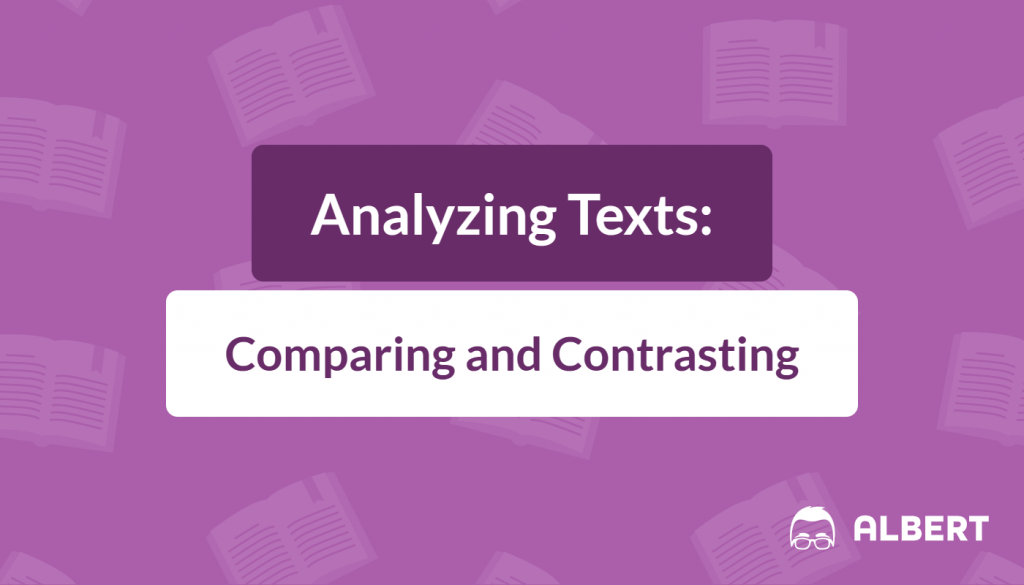What We Review
Introduction
Understanding how different stories are alike and different is a key skill for students. It helps you get what you’re reading and see how different writers do their thing.
This article will give you some cool tools to help high school students like you compare and contrast stories and books and show you why it’s important to do this.
Why Compare and Contrast Texts?

When you look at how different writers tackle the same big idea, like survival, you really start to understand their stories better. Take Jack London’s “Call of the Wild” and William Golding’s Lord of the Flies for example. Both are about surviving tough times, but they’re pretty different, too.
Call of the Wild features an animal protagonist, Buck the dog. On the other hand, Lord of the Flies centers on a human protagonist, Ralph. The stories also have diverse settings. One occurs in the Canadian wilderness, and the other in a remote island jungle.
Comparing and contrasting the different places and characters these writers use, you can get a better idea of what each writer is trying to say and how they see the world.
Identifying Similarities and Differences
After you read two stories that have something in common, like a big idea or theme, have students create a T-Chart or Venn Diagram to write down similarities and differences. you can make a T-Chart or Venn Diagram to jot down what’s similar and what’s not. For example, “Call of the Wild” and Lord of the Flies are both about tough survival situations. In both stories, the main characters face really bad stuff and sometimes think about giving up.

The stories also have major differences. When Call of the Wild ends, Buck chooses wildlife over society. However, in Lord of the Flies, Ralph returns to civilization after being rescued.
Writing down these similarities and differences helps you think more about the stories. You can start to figure out why the authors made different choices even though they were writing about similar things.
Analyzing Texts
When you really get into comparing and analyzing stories, you start to see how each writer’s own view and life can shape their story. You’ll learn to tell apart the big deals from the small stuff in the stories.
Let’s look at “Call of the Wild” and Lord of the Flies again. They’re set in wild, dangerous places, and that’s a big deal for both stories because it pushes the characters in certain directions.
However, these two stories have very different endings for their protagonists. One chooses to live free from society’s expectations, and the other chooses to return to society and its rules. By looking into the authors’ lives a bit, you can start to see why.

William Golding’s WW2 combat experience influenced Lord of the Flies. He wanted to show that anyone could turn evil under certain circumstances.
Ralph’s return to civilization shows the reader that society’s rules have a purpose in keeping us protected, even from ourselves.
Jack London, who wrote “Call of the Wild,” didn’t like how society tamed animals. He thought dogs, like Buck, should be free to live their natural lives. So Buck’s wild ending is about being true to who you really are.
Even when two stories seem similar, the authors’ own stories and reasons for writing can make each book really different and special.
Incorporating Textual Evidence to Support Claims
When you make a claim that states the similarities and differences between two or more texts, you should always support these claims with sufficient and relevant text evidence.
Having strong and specific claims should be your first step in building an effective argument. If your claim is too broad, it’s going to be hard to find the right parts of the story to support it. But once you have a good, clear point, finding evidence is much easier.

For example, to support the claim that Ralph wants to go home and return to civilization, in Lord of the Flies, you can refer to how Ralph establishes specific rules for the group of boys to follow on the island. He tries to mimic the social structure he has been used to. But some of the boys, primarily Jack, actively fight against these rules.
To support the claim that Buck enjoys being a wild dog and no longer wants to be tethered to humans in Call of the Wild, point out how Buck repeatedly leaves his last and loving honor, John Thornton, to interact with the neighboring wolves before finally deciding never to return.
Be careful not to make simple mistakes, like just talking about obvious things, like one story being about a dog and the other about a boy, without really digging into what the authors are trying to say. And always make sure the parts of the story you use to back up your ideas actually match what you’re saying. If they don’t, your whole argument might fall apart.
Conclusion
Comparing and contrasting two or more literary texts helps you to understand each text individually as well as acknowledge how different authors approach similar themes, story structures, or the process of character development. Through this process, you’ll form a firmer grasp of the author’s purpose and how the author’s personal experiences influence the stories that they write.
Practice Makes Perfect
In addition to the recommended activities above, Albert provides a wide range of texts for students to analyze and interpret. For emerging readers, check out our Short Readings course, which uses short passages to reinforce fundamental reading skills. Readers at all ability levels may enjoy our Leveled Readings course, which offers Lexile® leveled passages focused on a unifying essential question that keeps all students on the same page regardless of reading level. Learn more about the Lexile Framework here!
For authentic practice, check out our Essential Readings in Literature course. This course provides an overview of the core texts that American students often read in English class. Each text is broken down by skill, ensuring that students approach their reading from every angle.
With our easy-to-use interface and informative feedback, Albert.io is the perfect tool for reinforcing close reading skills and helping students develop a deeper understanding of the texts they encounter.








